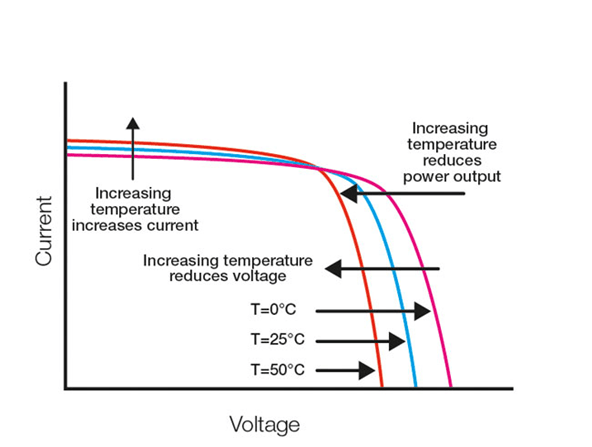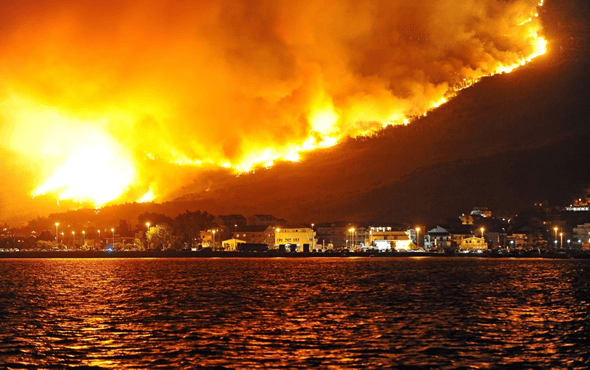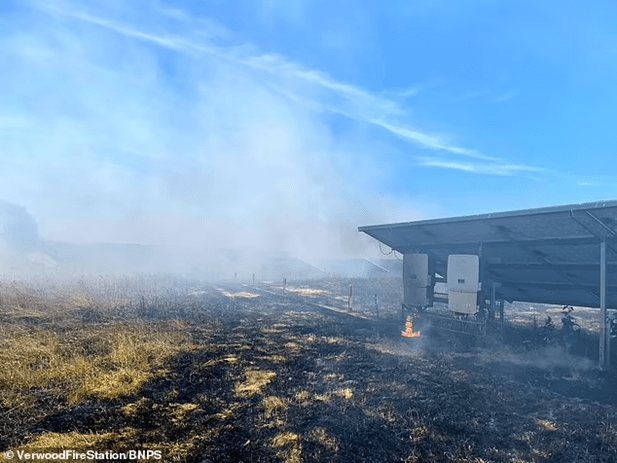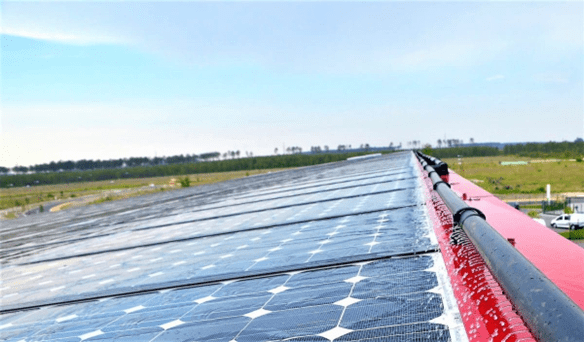July was a scorcher of a month, with many countries and prominent cities across the world experiencing record-breaking temps. You may think that this was good news for the world’s solar industry as the Sun was seemingly working in overdrive, but in fact, blazing temps can greatly complicate solar generation efforts. This year’s hot summer provides a window into the future where a world increasingly plagued by global warming impacts how solar energy is harnessed.
Too Much of a Good Thing
The dynamic between heat, sunlight, and solar panels can all seem counterintuitive. You would think that bright, sunny, long summer days would be most ideal for capturing solar energy. In actuality, excessive heat is a stressor that can erode solar PV panel efficiency.
Solar panels are manufactured and tested to function at their peak performance at a temperature of 25 °C (77 °F). Drops in energy efficiency start to happen once temps get above that 25°C mark. The slow erosion of PV efficiency is generally negligible on say an 88 °F degree summer day, but the compounding effect of efficiency losses can really weigh down performance on those especially hot 38+°C (100 °F) days.
The easiest way to explain the effect that ambient heat has on a solar panel’s performance is through temperature coefficients, which essentially indicate how much of a loss in efficiency will be incurred for every additional degree in surface temperature above 25 °C. For example, if the temperature coefficient of a solar panel is -0.5%, then for every 1°C rise, the panels maximum power will be reduced by 0.5%. So, on a 40 °C day, a solar panel’s output will be reduced by 7.5%.
July Heat Cripples Vulnerable Regions
A July heat wave ravaged countries across the world, but the effects were most pronounced in Western Europe where, unlike in the U.S., air conditioning is not a widespread household commodity. Temps above 38°C took hold across much of Europe, which in some cases was a nearly 15-degree deviation from historical summer temps that typically hover closer to 25°C.
London experienced its hottest day ever on July 19 when temps at Heathrow Airport hit 40.2 °C (104.4 °F). The hottest temps on the continent during the July heat wave were felt in the small town of Pinhão, Portugal were the high on July 14 reached a hard to comprehend 116.6 °F. The unprecedented heat and dry conditions in Europe during July led to widespread wildfires that wreaked havoc all over the continent. Over 5,400 people in Europe died during the month due to complications from the heat, many of whom were elderly people living in dwellings not equipped with A/C.
The U.S. was not spared from the historic heat wave that crippled Europe. According to an Axios article from July 25, 1,403 daily high-temperature records and 2,856 records for warmest overnight low temperature were set in the 30 days prior (Source: NOAA). Like in Europe, the blazing temps have fueled wildfires like the still burning Oak Fire in California, which has destroyed over 19,000 acres and forced the evacuation of over 6,000 people.
The once unfathomable record-breaking global temps that occurred in July are, of course, just the latest real-time manifestation of the climate crisis that we are all living in. UCLA climate scientist, Daniel Swain, recently made the following blunt assessment:
“Climate change is making extreme and unprecedented heat events both more intense and more common, pretty much universally throughout the world. Heat waves are probably the most underestimated type of potential disaster because they routinely kill a lot of people. And we just don’t hear about it because it doesn’t kill them in, to put it bluntly, sufficiently dramatic ways.”
The threat to human life and personal property are challenges wrought by the climate crisis, but the widespread threat to critical public infrastructure (like the electric grid) are of equal concern. In England, the oppressive heat compromised airport runways and buckled heat-sensitive train rails, leading to significant disruptions in travel. Meanwhile in Texas, the hottest month on record strained the state’s grid as previous demand records were broken 11 times in the month, including exceeding 80,000 MW for the first time ever.
The extreme temps can also pose similar issues to solar panel infrastructure. Although exceedingly rare, solar panel fires can occur. They are most often due to a design flaw, component defect, or faulty installation, but extreme heat is another contributing factor. A contained roof fire at a house in Quincy, MA in July was blamed on overheated solar panels, and just days ago – amidst prolonged 100+°F daily highs – a number of solar panels atop an office building in Dallas, TX caught fire.
Perhaps the most realistic fire threat involving solar panels is a wildfire-esque situation where dry vegetation underneath ground-mounted solar panels catches fire and spreads across a solar farm. This very situation has happened just in the past couple weeks amidst the July heat wave in Europe. An on-site grass fire affected a 30 MW solar farm in the Netherlands, and the same occurred at a 20 MW solar farm in the United Kingdom. Fire crews contained the fires in both instances and damage to the panels was minimal.
Overcoming the Heat Challenge
The solar industry is adapting to the growing climate challenges posed by a warming planet as numerous innovations are being developed to reduce the threat to efficiency that excessive heat can bring.
For one, the type of solar PV cell used matters. Monocrystalline and polycrystalline are the most common type of solar cells used on commercial panels, and they have the worst temperature coefficient of between -0.45% – 0.50%. The increasingly popular thin film solar cells have a temperature coefficient about half that at around -0.20%, while hybrid solar cells that combine both technologies sit roughly in the middle at -0.30%. A lot of concerns over heat-related efficiency loss can be alleviated as solar cell technology gets more sophisticated and market applications for thin film cells increase.
A range of active cooling technologies can also help solve the solar heat conundrum.
Companies like Sunbooster have harnessed an active cooling system that cools the surface of the panels by recycling rainwater and deploying it in an irrigation-like manner over top the panels during hot days.
Researchers at King Abdullah University of Science and Technology (KAUST) in Saudi Arabia and the Hong Kong Polytechnic University (PolyU) have also researched a hydrogel substance that can possibly have significant cooling capabilities. According to a PhysicsWorld article, “the researchers pressed a 1-cm-thick layer of the hydrogel against the underside of a standard silicon solar panel. When the temperature drops in the evening and overnight, the water absorbed by the material condenses to form liquid water. During the daytime, as the temperature increases, the heat from the PV panel causes the water to evaporate – a process that not only removes heat from the panel, but also regenerates the vapour sorbent so that the atmospheric water harvester (AWH) is ready for the next night-day cycle.” The technology is not yet fit for commercialization, but the researchers are optimistic about its long-term viability.
And in the “low hanging fruit” department, one of the easiest ways to cool solar panels is to combine them with their close cousin, the wind turbine. Wind turbines placed strategically on a solar farm act as massive fans, circulating cool air that flows over and around the ground-mounted panels below.
So much of the infrastructure relied on in the U.S. and elsewhere in the world was built during a time of fundamentally different assumptions about weather and climate. Clearly, the heat impacts felt last month are a reminder of how an ever-warming planet is changing this antiquated approach. The solar industry needs to harness promising innovations to adapt to new climate realities or run the risk of falling behind at a time when humankind needs it the most.
Cover Photo Source: LA Fire Department













